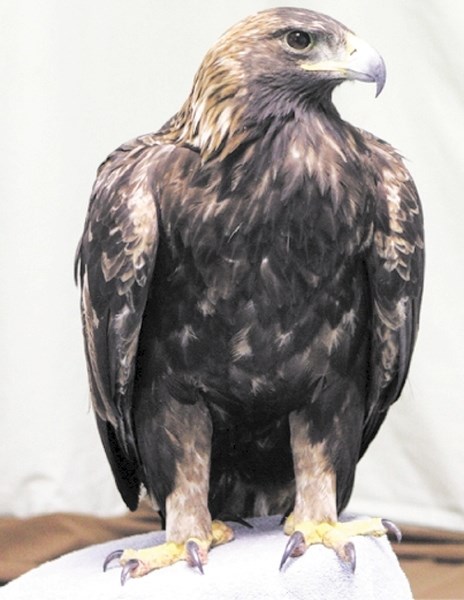The Alberta Institute for Wildlife Conservation (AIWC) near Madden has rehabilitated a male golden eagle that was suffering from near-fatal lead poisoning.
The eagle was found by a fish and wildlife officer near Canmore Nov. 9, and was extremely thin, hypothermic and dangerously anemic.
“It is really heart-wrenching when these huge magnificent birds come in and can barely stand up,” said AIWC founder and biologist Dianne Wittner.
“It was really touch-and-go the first week. He had lead in his blood.”
After 10 days of constant care, Wittner determined the eagle was “out of the woods.” In that time, Wittner said his weight increased by a full kilogram since entering the facility.
The AIWC has been in operation since 1993, and admits injured and sick wildlife with the goal of rehabilitating them and returning them to their natural habitat from its facility near Madden.
Wittner said lead poisoning in birds is evidence that the Alberta government needs to be following the examples of other provinces in banning lead shot, and lead in bullets that are used for game hunting.
“We have gotten a number of poisoned eagles over the years, and this is an issue that needs to be addressed by the Alberta government,” said Wittner.
“Coyotes are killed routinely every day, and their bodies are just left out to rot. When an eagle spots that, the first thing they go for is the open, bloody wound. That’s where all the lead shards are. There is a ton of research to prove that.”
Wittner added that it’s the little things like banning lead shots that can make humans’ impact on the environment less costly.
“It’s all about what us humans are doing that bring these birds down. Sometimes it’s power lines, or hit by a car, but we don’t get a lot of those cases,” said Wittner.
“A lot of it is frustrating because they are all preventable. We need to ban lead shot. It’s been done in other places where species of birds numbers are so low. We need to pay attention. Wild species are telling us what we are doing to the environment.”
Wittner says she would like to see the bird of prey released back to the wild before Christmas, “as our Christmas gift to him.”
For more information about the Alberta Institute for Wildlife Conservation, visit www.aiwc.ca.




